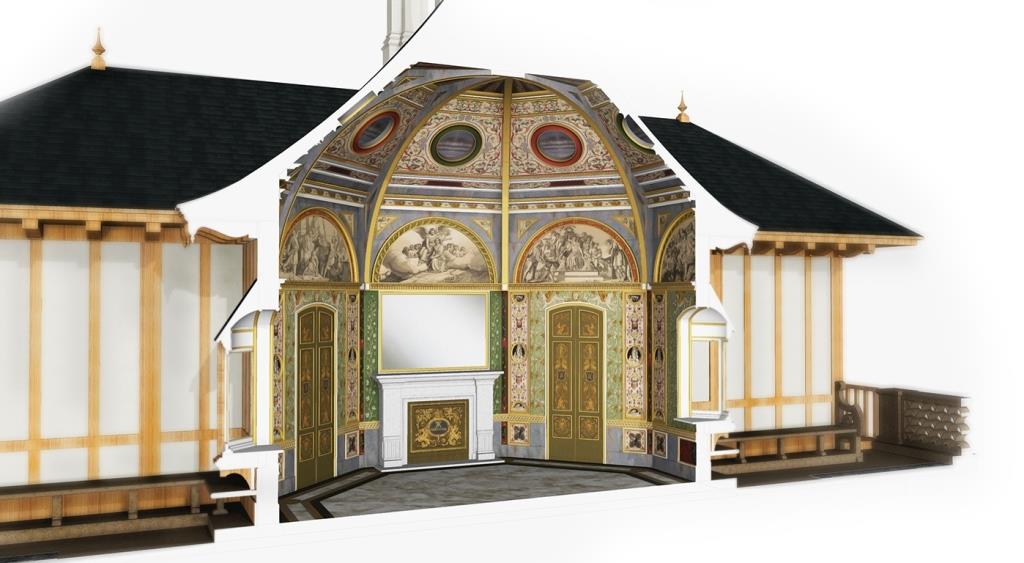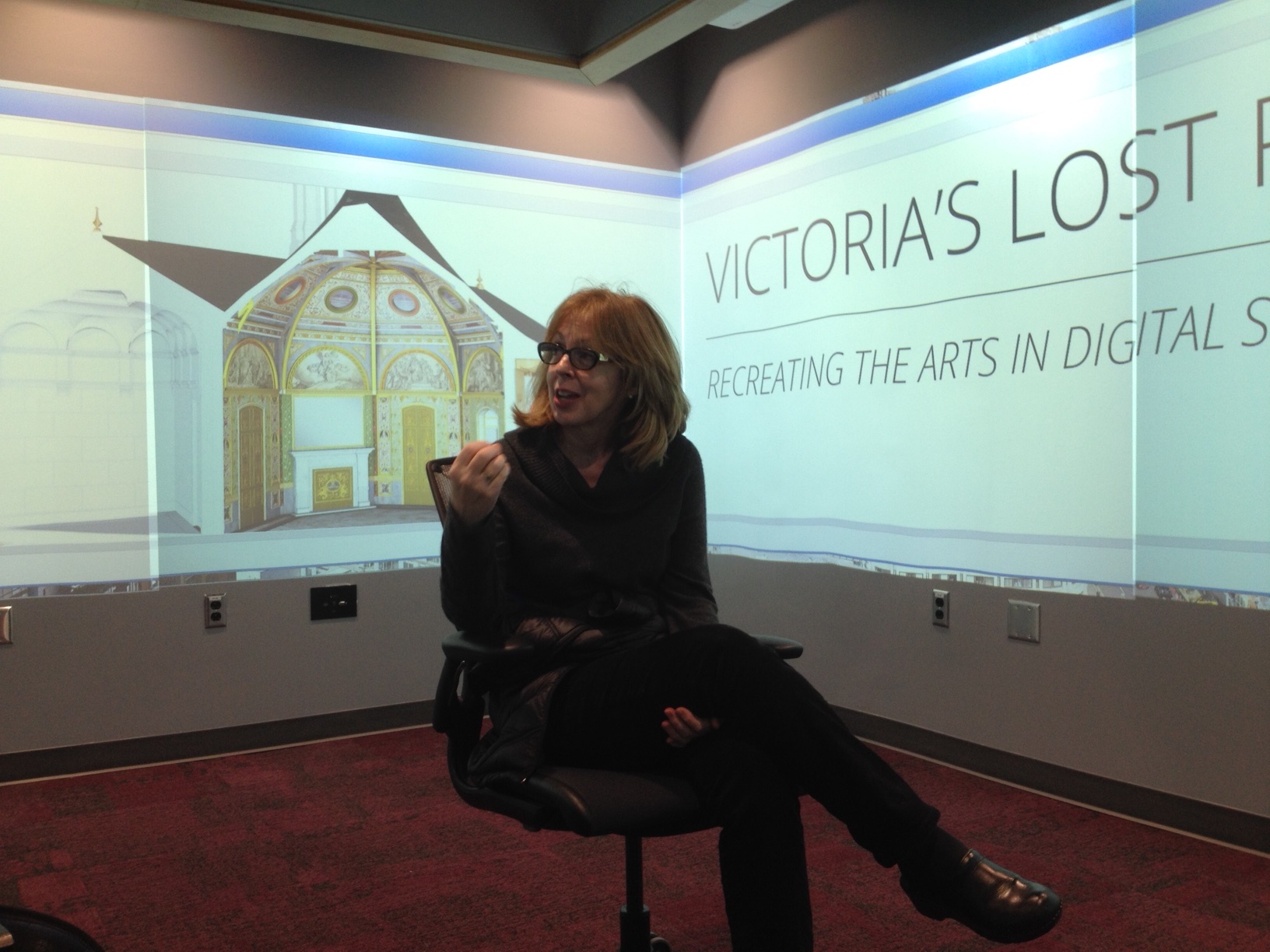The pavilion’s architectural model has moved into a new phase as of the start of the Spring 2015 semester. Our tireless graduate research assistants have now begun “texturing” the model in earnest. We plan to eventually derive several versions of the model in varying textured circumstances. But for now, we’re interested to prototype a fully textured model to get started with. Many of the materials (wood grain, roof shingles, etc) derive from what’s available or importable in Sketchup. The more interesting features come from our scans of Gruner — frescoes, lunettes, wall décor — which get skewed and stretched like virtual wallpaper over the architectural polygons. Take a look. Before:

And after texturing:

We demoed some of these early textured spaces in the new Visualization Studio in DH Hill Library. In fact, our model came to texture that room itself, covering its blank walls with images of our work in process. This square room offers 360-degree projection, not necessarily high-definition or immersive, but suitable for a more encompassing experience of what you’re looking at, whether a series of discrete images or a panoramic view. As with the iVisit mobile applications, these projections instantly change your sense of the model by the simple fact of encountering it in a differently embodied way. A room like this doesn’t simulate virtual environments like a “CAVE”; nevertheless, it does invite consideration of the model and its features with an alternate proprioception. We’re pleased to offer the NC State library content featuring humanities research for its demonstrations; we’re also excited to begin developing a navigational website which starts to let users traverse the space, whether in the visualization studio or on a remote screen. Stay tuned.
